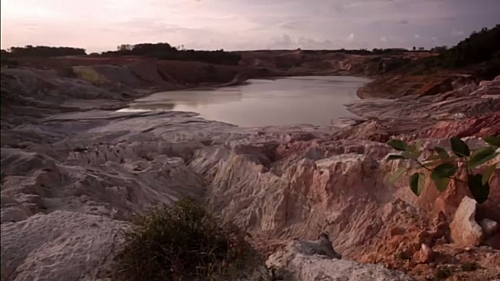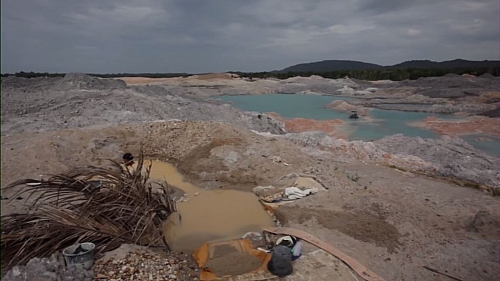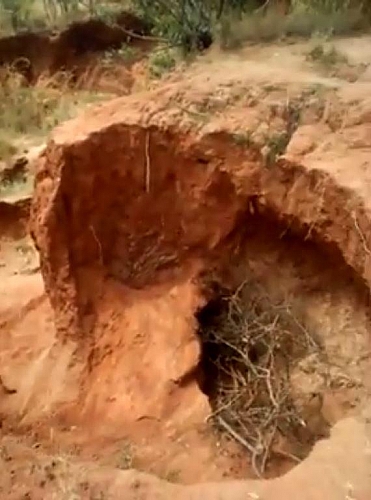According to history, tin mining started in 1904 when tin deposit was discovered in the Jos Plateau, it later reached its peak in 1970s; areas such as Barkin Ladi, Bukuru, Ropp, Hypang, Lamingo, Rayfield, Rafin Zeti, Zawan, and Gidan Mai Gandu are the common places where tin are mined in Jos. This new discovery was in indeed a great source revenue and livelihood to the State until it became very rampant and very useful to the country as whole and subsequently became a challenge to inhabitants of Plateau. Tin discovery was seen as a blessing at the initial stage, not until the adverse effects outweigh the advantage hence, exposing the miners, agricultural land to dangers and causing hazard to the inhabitants of Jos Plateau.
Tin mining has been the major cause of negative changes on landscape on the Jos Plateau. This activity, which involves the digging of the top soil in order to access the mineral beneath the earth, has equally exposed large portions of land to gully erosion,and as a result has led to land degradation with serious ecological problem which has created a negative impact on the state.
Effects of gully erosion on Jos Plateau
- Large portions of land all around Jos Plateau are covered with abandoned opened pits which brings to many mines the mining years that took place long ago, however, the pits have not only become an eyesore, but have claimed the lives of both young and old and have caused ill-health to majorities.
- Tin mining in Plateau had done much damage to the health of the inhabitants, such as increasing incidence of cancers caused by radioactive waste.
- Gully erosion is a recurrent process which has become a threat to the natural ecosystem, destroying both micro and macro-organisms and in most cases, the endanger species are rendered homeless.
- The original land which was scattered with natural vegetation in the Jos region has longed been cleared for mining, hence turning this region into open savannah grassland with widely spread eucalyptus trees, acacia and cactus plants, which are used for boundary delineation and for controlling of erosion.
- Open cast mining has led to the destruction of the landscape and enhancement of soil erosion, hence leading to drastic reduction of the general land area.
- Gully erosion which occurred due to mining, is one of the most serious mechanisms that led to land degradation in Jos Plateau and its immediate environs.
- Farmers were also affected in the mining process, as the development of gullies led to poor crop yields and limited land for large cultivation.
- Micro, macro organisms and native plants have been stripped off their natural ecosystem due to mining activities in this region.
- Tin mining activity releases three major contaminants such as radionuclides, dust and metal. Each of these contaminants escapes the mines in different ways and each have different hazardous effects on the environment.
- On the sites where tin is mined is said to have poorer soil and crops grown on such areas have nutrient deficiency compared to adjoining natural land.
- The abandoned mines are also death traps, as children and adultsoccasionally drown and the ever-increasing population of people living around the ponds means more and more people are exposed to dangerous radioactive particles.
Solution gully erosion in Jos Plateau
- The government of Plateau should construct bridges and wide culverts to channel the flow of water to further prevent flood from occurring in such areas where tin has been mined.
- Concrete channels should be constructed to collect water and direct its flow in artificial lake.
- Stronger structure like gabion may be necessary in some areas where there is adverse effect of mining to prevent further extension of the gullies. Gabions are wire woven baskets filled with stones; they can be placed across the gully area.
- Check dams (artificial lakes) should be constructed across the gully bed in regions that experience gully erosion, to slow down the movement of water and to allow sedimentations to settle in the water. In addition, stones should be laid across the gully area to form a gradual slope to the downstream side of the dam.
- Planting of eucalyptus trees within the gully sites should be encouraged, these tree roots hold the soil together such that it is not easily eroded.



